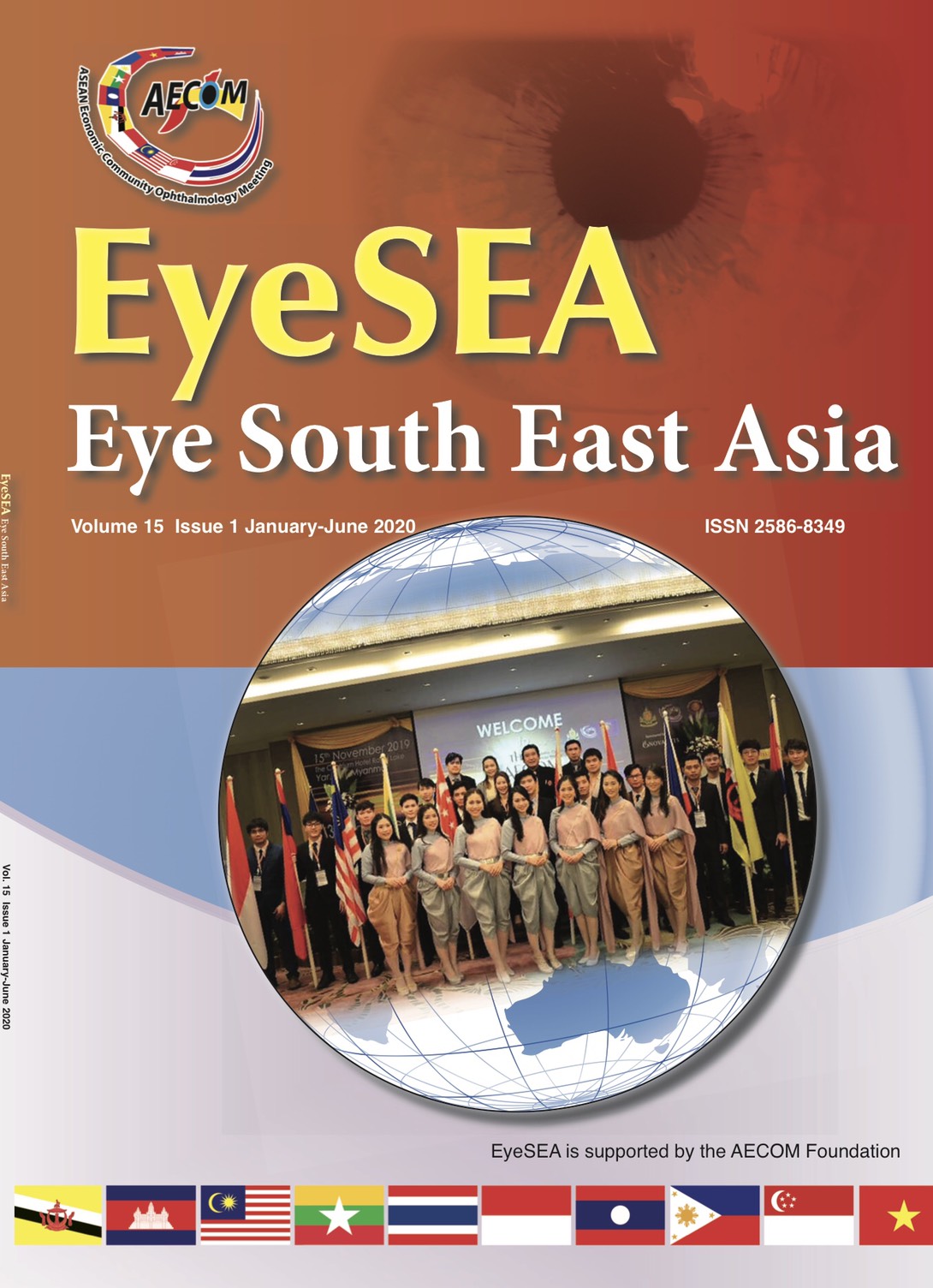Carotid cavernous sinus fistula with central retinal artery occlusion: A case report
Main Article Content
Abstract
Abstract
Background: A carotid-cavernous sinus fistula (CCF) is an abnormal arteriovenous communication between the cavernous sinus and the internal carotid artery (ICA) and/or external carotid artery (ECA). Central retinal artery occlusion (CRAO) is a rare posterior segment complication following CCF.
Case Report: We present a 58-year-old female complaining of acute visual loss, redness and swelling of the right eye following a motor vehicle accident. Her visual acuity was light perception (PL) in the right eye and 20/40 in the left eye. The intraocular pressure (IOP) was 52 mmHg in the right eye and normal in the left eye. Eye examinations revealed proptosis, ptosis, complete total ophthalmoplegia and a 5 mm fixed dilated right pupil with relative afferent pupillary defect (RAPD) positive in her right eye. Fundus examination showed CRAO in the right eye. Cerebral angiography revealed a high flow direct CCF Barrow’s type A. Endovascular treatment with balloon embolization was performed. During the 1-year follow-up, the patient had improvement of eye redness, proptosis and ophthalmoplegia. However, the visual prognosis was poor due to optic atrophy and macular ischemia with the final visual acuity of PL.
Conclusion: CRAO is a rare complication of traumatic CCF. Traumatic CCF often require endovascular treatment and early recognition of CRAO are of clinical importance.
Conflict of interest: none.
Keywords: carotid cavernous sinus fistula, central retinal artery occlusion, endovascular treatment
Article Details
References
2. Varma DD, Cugati S, Lee AW, Chen CS. A review of central retinal artery occlusion: clinical presentation and management. Eye (Lond). 2013;27:688-97.
3. Pillai GS, Ghose S, Singh N, Garodia VK, Puthassery R, Manjunatha NP. Central retinal artery occlusion in dural carotid cavernous fistula. Retina. 2002; 22:493-4.
4. Scheerlinck TA, Van den Brande P. Post-traumatic intima dissection and thrombosis of the external iliac artery in sportsman. Eur J Vasc Surg. 1994;8:645–7.
5. Atta HR, Dick AD, Hamed LM, et al. Venous stasis orbitopathy: A clinical and echographic study. Br J Ophthalmol 1996;80:129–34.
6. Wolpert SM. In re: Serbinenko FA. Balloon catheterization and occlusion of major cerebral vessels. AJNR Am J Neuroradiol. 2000;21:1359-60.
7. Hayreh SS, Zimmerman MB, Kimura A, Sanon A. Central retinal artery occlusion. Retinal survival time. Exp Eye Res. 2004;78:723-36.
8. Hayreh SS, Kolder HE, Weingeist TA. Central retinal artery occlusion and retinal tolerance time. Ophthalmology 1980; 87:75-8.


